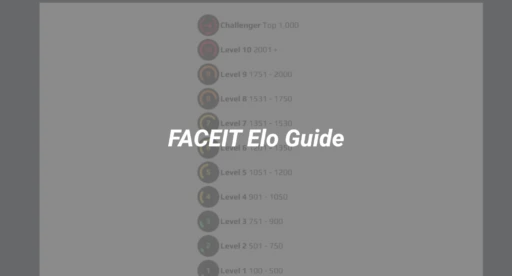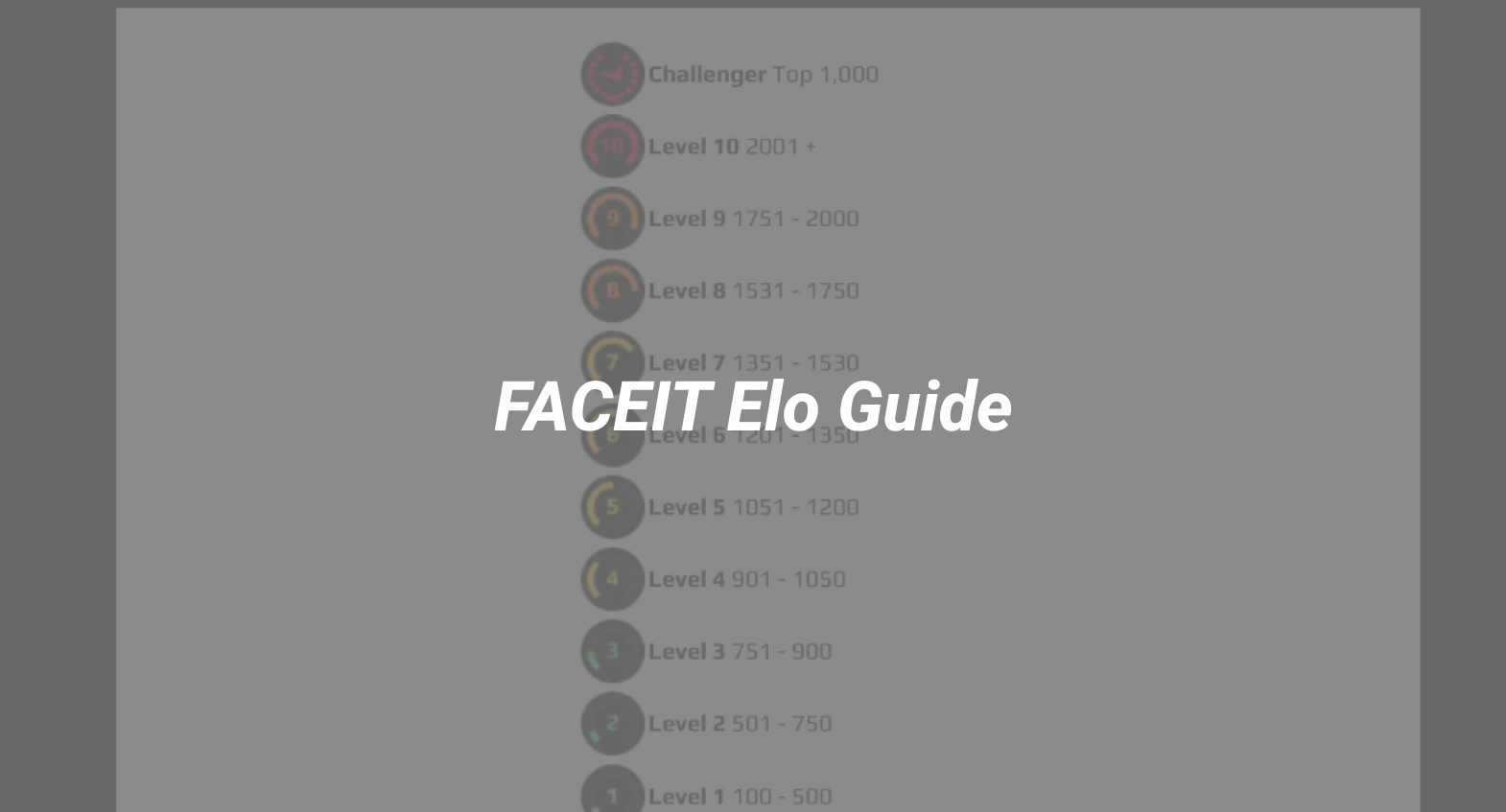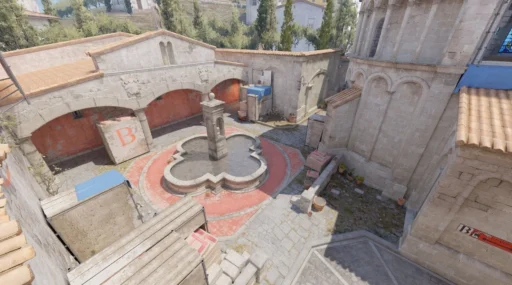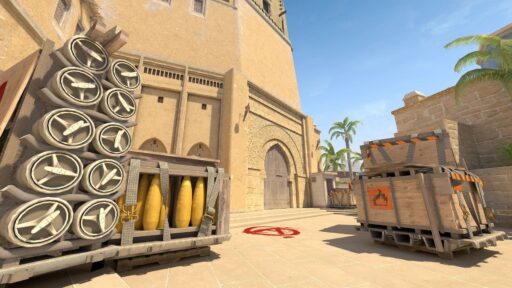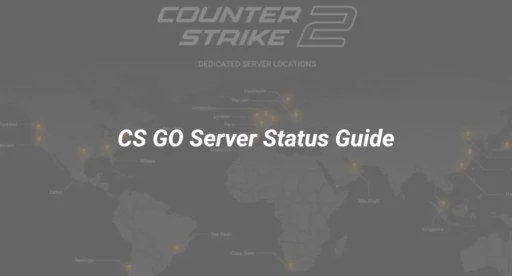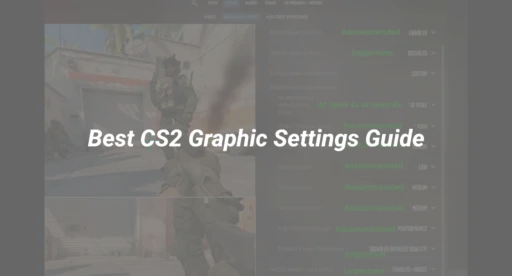Ever feel like you’re stuck in Elo limbo—grinding game after game on FACEIT without seeing your rank move? You’re definitely not alone. The FACEIT Elo system can feel confusing, especially when you’re trying hard but not making progress. Whether you’re new to the platform or aiming to break into the Challenger leaderboard, understanding how Elo works is key to leveling up in Counter-Strike 2.
This guide is your one-stop resource for decoding FACEIT Elo. From how it’s calculated to smart strategies for ranking up, we’ve packed everything in—so let’s dive in.
What Exactly Is FACEIT Elo?
FACEIT Elo is a competitive ranking system that gives you a numerical score—starting at 100—that rises (or falls) based on your match results. It’s a modern twist on the original chess Elo rating formula, fine-tuned for competitive team shooters like CS2.
Think of your Elo as a real-time snapshot of your skill. The higher your Elo, the tougher the competition you’ll face—and the more impressive your victories become.
How Elo Is Calculated
The system is basically a tug-of-war between teams. When your team wins, you take Elo points from the opposing team. When you lose, the reverse happens. How many points move depends on:
- The Elo gap between teams before the match
- Win probability based on that gap
- Occasionally, your individual performance
Usually, you’ll see Elo shifts between 20–30 points per match.
FACEIT Skill Levels Explained
FACEIT splits players into ten skill levels—plus the exclusive Challenger rank. Here’s how they break down:
Levels 1–3: Just Getting Started
Level 1 (100–500 Elo): This is where most new players land. You’ll run into everyone from true beginners to experienced smurfs. Expect inconsistent teamwork and a wild range of skill levels.
Level 2 (501–750 Elo): You’re improving mechanics and starting to get how teamplay works. You’ll notice better coordination and fewer random plays.
Level 3 (751–900 Elo): Things start getting more competitive here. Players understand economy, utility, and basic map control.
Levels 4–6: Mid-Tier Warriors
Level 4 (901–1050 Elo): You’ve crossed into “serious” territory. Your aim, communication, and game sense start to show. You’re playing with people who want to win—and know how.
Level 5 (1051–1200 Elo): You’re now the average FACEIT player. Most matches are decently balanced. It’s where raw aim meets real tactics.
Level 6 (1201–1350 Elo): These players can call strats, control eco rounds, and make clutch plays. Map knowledge and team synergy really start to matter here.
Levels 7–10: High-Level Competitive Play
Level 7 (1351–1530 Elo): Now you’re going toe-to-toe with solid competitors. Game IQ and consistent performance are essential.
Level 8 (1531–1750 Elo): This is where future semi-pros sharpen their blades. Winning here takes strong individual and team play.
Level 9 (1751–2000 Elo): You’re among the best in your region. These matches feel like scrims—fast, tactical, and unforgiving.
Level 10 (2001+ Elo): This is the top. From streamers to pro team hopefuls, everyone here plays to win.
Challenger Rank: The Elite Few
Challenger is reserved for the top 1,000 players in your region. If you’re here, you’re either a current or future pro. Every round counts.
FACEIT vs. CS2 Premier: How Do They Compare?
Ever wonder how your FACEIT level stacks up against CS2’s Premier Mode? While Valve hasn’t released official conversion charts, here’s a rough community consensus:
| FACEIT Level | Approx. CS2 Premier Rating |
|---|---|
| Level 1 | 1,000–3,000 |
| Level 5 | 9,000–10,000 |
| Level 10+ | 20,000+ |
FACEIT Strengths
- Strong anti-cheat system
- More balanced matchmaking
- Competitive community and pro tournaments
- Custom stats and replay tools
CS2 Premier Strengths
- Official Valve ecosystem
- No need for third-party software
- More casual-friendly
- Free to play (no subscription)
Behind the Numbers: How FACEIT Elo Works
Let’s get nerdy for a second.
The Elo formula FACEIT uses is based on this:
Expected Score = 1 / (1 + 10 ^ ((Opponent Elo – Your Elo) / 400))
This tells the system how likely you are to win. Then it adjusts your Elo based on the actual result. The “K-factor” is usually set to 50, so the most you can gain or lose in a fair matchup is around 25 points.
Other variables can tweak the outcome:
- Team vs. team rating gap
- Win or loss
- Occasionally your personal performance
- Account age, reliability, and whether you’re Premium
FACEIT 2.0 Improvements
FACEIT’s updated algorithm also accounts for:
- Number of games played
- Teammate coordination
- Match history
- Server location
- Smurf prevention
So it’s not just about kills anymore.
How to Rank Up Faster on FACEIT
Reaching higher levels isn’t just about getting more frags. Here’s what really helps:
1. Stack Up with a Team
Solo queue is a coin toss. One toxic teammate or AFK can ruin your grind. Try building a team with players who:
- Communicate well
- Stay positive
- Play consistently
Scout potential teammates during solo games and invite the ones who perform well without tilting.
2. Improve Your Mechanics & Game Sense
Mechanics Tips:
- Use aim trainers or grind deathmatch
- Adjust your CS2 launch options for smoother FPS
- Customize your crosshair for better visibility
Game Sense Tips:
- Watch pro demos
- Analyze your own replays
- Focus on positioning and economy—not just fragging
3. Know Your Maps
If you’re on FACEIT Premium, you can ban maps you’re bad at—use that wisely.
- Specialize in 2–3 maps first
- Learn utility lineups
- Master callouts for maps like Mirage
Is FACEIT Premium Worth It?
If you’re serious about climbing the ranks, Premium gives you an edge:
Key Premium Perks:
- Pick preferred maps
- Choose server location
- Access faster queues
- Detailed match stats
- Participate in Premium-only tournaments
There’s also a Plus plan that adds:
- Higher-priority queues
- Custom emojis and nicknames
- Early access to new features
If you’re putting in the hours, it’s a solid investment.
Optimize Your Setup for Competitive Play
Before blaming Elo, make sure your system isn’t holding you back.
Technical Tweaks:
- Boost your FPS
- Set proper audio settings to hear footsteps clearly
- Improve latency with network optimizations
Training Setup:
- Use practice commands
- Set up grenade binds for consistent utility
- Streamline buying with buy binds
Final Thoughts
FACEIT Elo isn’t just a number—it’s a reflection of your competitive growth. Climbing it means improving your mindset, your skills, your teamwork, and your setup. It’s not about streaking to Level 10 overnight. It’s about making small, smart changes that add up.
Focus on your fundamentals. Build a squad. Stay calm when things go south. And remember: every match is a chance to learn.
Stick with it, apply the tips in this guide, and you’ll be leveling up in no time—maybe even all the way to Challenger.

